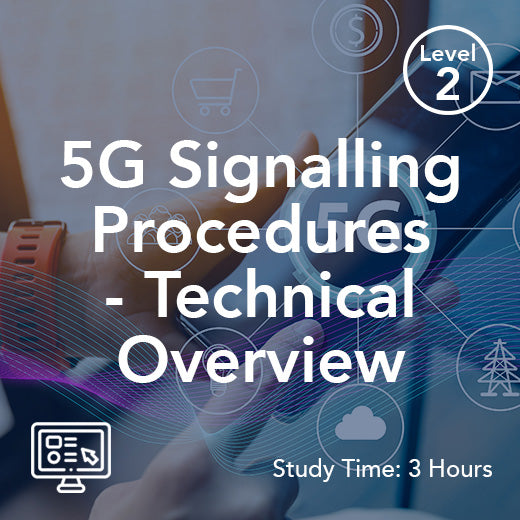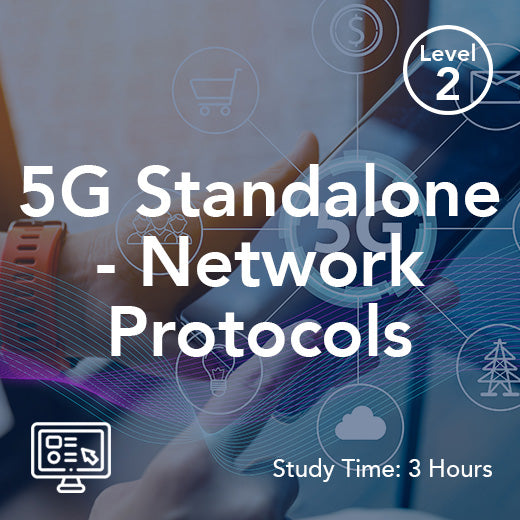Understanding MVNO: A Simple Guide to Mobile Virtual Network Operators
- , by Paul Waite
- 18 min reading time
In today's digital world, understanding various forms of communication technology is more important than ever. One such technology that many people encounter daily is MMS messaging. But what is MMS messaging, and how does it differ from the more commonly known SMS? MMS, or Multimedia Messaging Service, allows users to send not just sms messages and text messages, but pictures, videos, and audio files. This capability makes it a versatile tool for staying connected and sharing experiences in richer detail. The use of MMS messaging has contributed to the success of modern communication by enabling richer, more engaging interactions. In this guide, we'll break down the essentials of MMS messaging, exploring its functionalities, benefits, and how it fits into our modern communication landscape.
What is MMS Messaging?
Definition and Basics
MMS, or Multimedia Messaging Service, is a method of sending messages that include multimedia content. MMS is defined as a service for sending multimedia content such as images, videos, and audio files over cellular networks. Unlike SMS, which is limited to text, MMS enables the transmission of images, videos, and audio files. This makes it a more dynamic and engaging form of communication. MMS messages are sent over a cellular network, similar to how SMS is delivered. However, due to their larger data size, they may take longer to send and receive, depending on the the carrier, network speed and the file size. The service is integrated into most modern smartphones, making it accessible to a wide audience and enabling them to receive mms messages . This capability allows users to enhance their messaging with rich media, providing a more vivid and expressive way to share experiences. Understanding what is MMS messaging helps users make informed choices about how they communicate in today's digital age.
History and Evolution
MMS messaging evolved from the need to enhance the basic text capabilities of SMS. Introduced in 2002, MMS allowed users to share media-rich content, which was a significant leap from the text-only limitations of SMS. This technological advancement laid the groundwork for more interactive and engaging communication. Initially, the uptake was slow due to high costs and limited handset compatibility. However, as mobile technology improved and smartphones became ubiquitous, MMS gained popularity. Over the years, the integration of cameras and enhanced network speeds further propelled its growth. As technology advanced, MMS messaging was gradually deployed across mobile networks and devices, making it more accessible to users. Despite facing competition from internet-based messaging apps that offer similar features, MMS remains a staple in areas with limited internet connectivity. Understanding the history and evolution of MMS messaging and its various mms messaging use cases provides insight into its enduring relevance and adaptability in an ever-changing mobile communication landscape. This context helps to answer the fundamental question: what is MMS messaging, and why does it matter today?
Comparison with SMS
MMS and SMS are both messaging services, yet they differ in functionality and purpose. SMS, or Short Message Service, is designed for sending short text messages, typically up to 160 characters. It is a straightforward service, requiring minimal data usage, and is widely supported across all mobile phones. In contrast, MMS expands the communication possibilities by allowing the phone users to send multimedia content, such as images, video clips, and audio files. This makes MMS more versatile for sharing detailed information or creative content. However, MMS messages often incur higher charges and take longer to transmit due to their larger data size. Additionally, not all devices or networks fully support the rich features of MMS, whereas SMS is nearly universal. It is important to note that sms and mms messages are not equivalent in terms of functionality—MMS offers enhanced multimedia capabilities that SMS does not provide. Understanding these differences helps answer the question, “what is MMS messaging?” and highlights its role as a complementary service to SMS, particularly when multimedia messaging is desired.
How MMS Messaging Works
Technical Components
MMS messaging operates using several technical components to deliver multimedia content. At its core, it relies on the Multimedia Messaging Service Centre (MMSC), which acts as a relay station. When an MMS is sent, the message is first uploaded to the MMSC. The MMSC then stores the multimedia content and generates a notification message sent to the recipient's device. This notification includes a link to download the actual content. The recipient's device retrieves the content from the MMSC via cellular data or Wi-Fi. Additionally, MMS uses protocols like WAP (Wireless Application Protocol) to handle the data transfer, ensuring compatibility across different devices and networks. The process also involves MIME (Multipurpose Internet Mail Extensions) encoding to package various media types. Understanding these technical components provides a clearer picture of "what is MMS messaging" and how it enables the seamless sharing of rich media content.
Sending and Receiving Process
The process of sending and receiving an MMS message involves several steps to ensure that multimedia content reaches its intended recipient. When a user sends an MMS, the message is first uploaded to the Multimedia Messaging Service Centre (MMSC). Here, the multimedia files to send messages are encapsulated and stored temporarily. The MMSC then sends a notification to the recipient's device, which includes a link to download the message content. Upon receiving this notification, the recipient's device requests the multimedia data from the MMSC using mobile data or Wi-Fi. This process ensures that the content is delivered without overwhelming the recipient's device with large files. Once downloaded, the multimedia message is available for viewing in the device's messaging application. For the process to work smoothly, both devices must have MMS capabilities and be connected to a network that supports multimedia messaging, such as an internet connection . Understanding this process highlights what is MMS messaging and how it facilitates rich content sharing.
Network Requirements
The successful transmission of MMS messages depends on specific network requirements. Unlike SMS, which primarily uses the standard mobile network, MMS relies on data connections and a stable cellular network connection to handle the larger multimedia files. This means that both the sender and recipient must have an active mobile data plan or access to Wi-Fi. Only authorised devices and networks with the correct configurations can support MMS messaging. The network must support the necessary protocols, such as WAP (Wireless Application Protocol), to facilitate the transfer of multimedia content. Additionally, the devices involved need to be configured correctly, with the appropriate MMS settings enabled. These settings are often provided by the mobile network operator and include details about the MMSC server. Network speed and stability also play significant roles; slow or unstable connections may result in delayed or failed message delivery. Understanding these network requirements clarifies what is MMS messaging and ensures users can effectively utilise this service to share multimedia content.
Benefits of MMS Messaging
Multimedia Capabilities
One of the standout benefits of MMS messaging is its ability to handle various multimedia formats. Unlike traditional SMS, MMS allows users to send images, video clips, links, audio files, and even slideshows. MMS can also be used to share multimedia presentations, making it a valuable tool for both personal and business communication. This versatility enhances communication by enabling users to convey more than just text, including promotional messages that can engage an audience . For instance, a picture can capture moments in a way that words cannot, while a video can provide dynamic storytelling. These multimedia capabilities make MMS a valuable tool for personal expression and storytelling. It is also beneficial for businesses that want to engage customers with richer content in marketing campaigns. With the ability to include visual and auditory elements, messages become more engaging and impactful. This broad range of media options illustrates what is MMS messaging at its core—an enriched platform for sharing and connecting. This feature makes MMS messaging a preferred choice for those seeking a more comprehensive communication experience.
Enhanced User Experience
MMS messaging offers an enhanced user experience by integrating multimedia elements into everyday communication. This integration allows users to express themselves beyond plain text messages, making interactions more engaging and personal. For example, sharing a photo from a holiday trip or a short video of a memorable event adds depth to the message, creating a richer narrative. By simplifying communication and enabling more expressive and meaningful interactions, MMS messaging can enrich daily life and make users' lives easier and more connected. This capability caters to the increasing demand for visual content, such as appointment reminders especially in an era where visuals dominate social media and online interactions. MMS also supports the inclusion of multiple media types in a single message, offering a seamless and versatile way to convey complex information. This adaptability not only improves personal communication but also benefits businesses aiming to connect with customers on a more interactive level. By understanding what is MMS messaging, users can leverage these enhanced features to improve how they communicate, resulting in more meaningful and impactful exchanges.
Business Applications
MMS messaging can be a powerful tool for businesses looking to enhance their marketing and communication strategies. By leveraging its multimedia capabilities, companies can create visually engaging content that captures the attention of their audience. The aim of using MMS in marketing is to increase customer engagement and drive sales through visually compelling content. For example, businesses can send promotional images, product demo videos, photos, or audio clips to showcase new offerings or services. This type of rich content can lead to higher engagement rates compared to text-only messages, which can ultimately boost sales. Additionally, MMS can be used for personalised marketing, providing customers with tailored messages that include multimedia elements relevant to their interests. It can also serve as a platform for interactive campaigns, encouraging customer participation through photo or video submissions. Furthermore, MMS can be utilised for internal communications, allowing teams to share media-rich updates or training materials. Understanding what is MMS messaging and its business applications, alongside sms marketing strategies, can help companies effectively reach their audience with compelling and interactive content.
Challenges with MMS Messaging
Cost Considerations
One of the main challenges associated with MMS messaging is the cost. Sending MMS messages often incurs higher charges than standard SMS due to the larger data size and the use of multimedia content. These costs can vary significantly depending on the mobile service provider, the recipient's network, and the size of the media files being sent. For users without unlimited data plans, sending multiple MMS messages can quickly accumulate data charges, leading to unexpectedly high bills. High costs can influence consumers' choices, making them less likely to adopt MMS messaging widely and prompting them to seek more affordable alternatives. This potential for increased costs can deter users from utilising MMS messaging frequently, especially when alternative messaging apps offer similar functionalities for free over Wi-Fi or data. Businesses must also consider these costs when integrating or enable MMS messaging into their communication strategies, as sending bulk MMS messages can be expensive. Understanding what is MMS messaging and its cost implications, including the costs associated with sending delivery notifications, is crucial for both individuals and businesses to manage expenses effectively while leveraging the benefits of multimedia communication.
Compatibility Issues
Compatibility issues present a significant challenge for MMS messaging. Not all mobile devices or networks support MMS, which can lead to inconsistencies in message delivery. Branded devices from major manufacturers are more likely to support the full range of MMS features compared to generic or older models. Older phones, in particular, may lack the necessary software or hardware capabilities to send or receive multimedia messages. Additionally, different network providers may have varying standards for handling MMS, which can result in messages being delivered in a degraded format or not at all. This lack of uniformity can cause frustration for users who expect seamless multimedia communication, particularly in scenarios like group messaging . Furthermore, international messaging can introduce additional compatibility hurdles, as network standards and configurations may differ across countries. These issues highlight the importance of understanding what is MMS messaging and the potential compatibility barriers. Users must ensure their devices and network plans support MMS to fully utilise its capabilities. Similarly, businesses should consider these compatibility concerns when designing MMS-based marketing campaigns to ensure their messages reach their intended audience effectively.
Privacy Concerns
Privacy concerns are another significant challenge associated with MMS messaging. Sending multimedia content over a cellular network inherently involves the risk of data interception or unauthorised access. Unlike some internet-based messaging services that offer end-to-end encryption, MMS messages are not always encrypted, making recipients of them potentially vulnerable to security breaches. Additionally, MMS messages often pass through multiple servers, such as the Multimedia Messaging Service Centre (MMSC), before reaching the recipient. Each of these points can be a potential vulnerability for data leaks or hacking attempts. Users must also be cautious about sending sensitive information through MMS, as multimedia files can be easily shared or forwarded without the sender's control. It is especially important to protect contact information when sending MMS messages, as unauthorized access or misuse of contact details can lead to further privacy risks, similar to those that can occur during video calling . Understanding what is MMS messaging and its privacy implications is crucial for users to make informed choices about the type of content they share. To mitigate risks, users and businesses should consider additional security measures, such as encryption tools or alternative secure messaging platforms.
Unrelated Concepts
The abbreviation MMS can refer to several unrelated concepts, making it essential to clarify the context in which it is used. Most commonly, MMS stands for Multimedia Messaging Service, a technology that enables users to send messages containing multimedia content such as images, videos, and audio clips over cellular networks. This service has become a vital tool for businesses and individuals alike, allowing companies to notify customers about new products, provide customer support, and create engaging marketing campaigns that foster strong relationships with their audience. For example, a business might use MMS messages to send a promotional video or an audio message to communicate directly with customers, enhancing their marketing efforts and brand presence.
However, MMS can also refer to Miracle Mineral Solution, a controversial chemical solution that has been falsely marketed as a health treatment. Unlike the multimedia messaging service, Miracle Mineral Solution is not related to communication technology; instead, it is a product that has raised significant health concerns due to its potentially harmful effects. Additionally, MMS may refer to other entities, such as Marketing & Management Services Ltd, a UK-based company offering insurance schemes and administration services, or MMS London, a distributor that supports indie publishing and marketing services. These diverse meanings highlight the importance of specifying which MMS is being discussed, especially in professional and business contexts, to avoid confusion and ensure that users, customers, and businesses are referring to the intended solution or service.
Future of MMS Messaging
Technological Advancements
The future of MMS messaging is intrinsically linked to ongoing technological advancements. As mobile networks transition to 5G, the increased speed and reduced latency could enhance MMS capabilities, allowing for quicker transmission of larger multimedia files. This improvement would make MMS a more viable option for sharing high-quality images and videos, particularly appealing to iphone users . Additionally, advancements in mobile device technology, such as better cameras and enhanced media processing capabilities, could further enrich the content users can create and share via MMS. Furthermore, developments in artificial intelligence and machine learning might offer innovative features like automated multimedia editing or enhanced content suggestions, making MMS more intuitive and user-friendly. However, despite these potential advancements, MMS must also evolve to address current challenges, such as cost and privacy concerns, to remain competitive in the communication landscape. Understanding what is MMS messaging and its future potential can help users and businesses anticipate and adapt to these technological changes.
Integration with Other Platforms
The future of MMS messaging may see enhanced integration with other communication and social platforms. As users increasingly prefer seamless transitions between different services, MMS could evolve to work more closely with apps like social media, email, and cloud storage solutions. This integration could allow users to share multimedia content effortlessly across various platforms without the need to manually transfer files. For example, users might directly post an image sent via MMS to their social media profiles or save it to a cloud storage service for easy access. Additionally, MMS messaging can be linked with websites, enabling users to share or access multimedia content directly from web pages. Moreover, businesses could leverage this integration for more cohesive marketing efforts, enabling them to streamline multimedia communications across multiple channels. As such developments unfold, understanding what is MMS messaging and its potential integrations becomes crucial for users and companies alike. This adaptability will determine how MMS remains relevant and valuable in the rapidly evolving digital communication ecosystem.
Predictions and Trends
Predictions for the future of MMS messaging suggest a blend of continuity and innovation. Despite the rise of internet-based messaging apps, MMS is expected to retain its relevance, particularly in regions with limited internet connectivity. Technological advancements, such as the rollout of 5G, will likely enhance the speed and quality of MMS, making it more appealing for multimedia sharing. Furthermore, increased focus on privacy and security could lead to the implementation of encryption features for MMS, addressing current concerns. University research and academic studies may also play a significant role in shaping the future development and security of MMS messaging, providing peer-reviewed insights and validating new technologies. In terms of trends, we might see more personalised and interactive MMS campaigns from businesses, leveraging AI to tailor content to individual preferences. There's also potential for MMS to integrate augmented reality (AR) and virtual reality (VR) elements, providing an even richer user experience. Understanding what is MMS messaging and staying abreast of these predictions and trends, especially in relation to unlimited texting options, will be essential for users and businesses aiming to make the most of this evolving communication tool.
Conclusion
In conclusion, the term MMS encompasses a range of meanings, most notably Miracle Mineral Solution and Multimedia Messaging Service. Miracle Mineral Solution, which contains sodium chlorite, has been promoted with misleading health claims, including as a treatment for various conditions. However, its use can result in severe side effects such as severe nausea, vomiting, and dehydration, and it is not approved as a health treatment in many countries, including the UK. Users and businesses should be cautious about any claims regarding Miracle Mineral Solution, as its distribution and sale can pose significant health risks and legal issues.
On the other hand, Multimedia Messaging Service (MMS) is a well-established technology standard that allows users to send messages containing multimedia content—such as videos, audio clips, and links—over cellular networks. This capability has become an essential part of modern business communication, enabling companies to create engaging relationships with customers, deliver support, and enhance their marketing strategies through rich multimedia content. The development of MMS as a marketing tool has also led to the emergence of specialized services and companies, such as Marketing & Management Services Ltd and MMS London, further demonstrating the versatility and benefits of MMS in various industries.
Ultimately, understanding the different meanings and implications of MMS is crucial for both users and businesses. By clearly distinguishing between Miracle Mineral Solution and Multimedia Messaging Service, individuals and organizations can avoid potentially misleading claims and health risks, while fully leveraging the communication capabilities and marketing benefits that MMS messages offer.

































